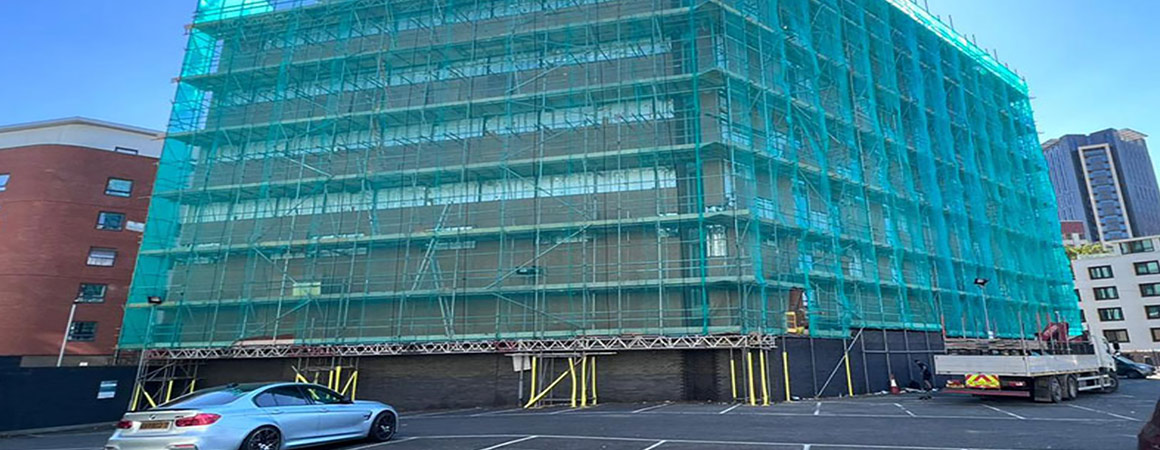If you’re using scaffolding in 2025, there are rules you need to follow. Most of them haven’t changed, but they still catch people out, especially regarding inspections, paperwork and who’s responsible.
Keep reading this helpful guide as our experts discuss what the law expects in plain terms.
What Are the UK Scaffolding Regulations in 2025?
The UK scaffolding regulations in 2025 include the Work at Height Regulations 2005, the CDM Regulations 2015, the Health and Safety at Work Act 1974 and PUWER 1998. These laws cover scaffold planning, installation, inspection, safe use and competence. Remember, local permits are also required if scaffolding is placed on public land.
Scaffolding Regulations Explained In More Detail
Several UK laws apply to scaffolding in 2025. Here’s what each one covers and why it matters:
Work at Height Regulations 2005
The Work at Height Regulations 2005 covers all work done above ground level. For scaffolding, this means:
- Inspections are required before first use, every 7 days and after any event that could affect stability. Learn more about scaffolding inspections here.
- Scaffolding must be planned, erected and used safely
- Only competent persons can carry out the erection and inspection
Construction (Design and Management) Regulations 2015 (CDM)
This applies to all construction projects. CDM ensures that health and safety are built into the planning from the start. Relevant to scaffolding because:
- Principal contractors must ensure that the scaffolding is made and installed safely
- Temporary works like scaffolding need to be coordinated and risk-assessed
- Responsibilities must be clearly assigned
Health and Safety at Work etc. Act 1974
This is the foundation of all UK workplace safety laws. HSE requires:
- Employers and site managers to ensure scaffolding is safe to use
- Risks to workers and the public to be properly controlled
- Any failure in scaffold safety can lead to prosecution under this Act
Provision and Use of Work Equipment Regulations 1998 (PUWER)
Scaffolding is classed as work equipment under PUWER. This means:
- It must be fit for purpose and maintained in a safe condition
- Those using, erecting or inspecting it must be properly trained
Local Authority Rules (Public Areas)
If scaffolding goes over a pavement, road or public space, most councils require the following:
- A temporary structure licence
- Extra safety measures, such as barriers, warning signs and lighting
So, Who Is Responsible for Compliance?
Responsibility for scaffolding safety depends on your role in the project. But as the law states, if you control the work, you’re accountable for making sure the scaffolding is safe and legally compliant:
Principal Contractor
On most sites, the principal contractor holds overall responsibility. They must:
- Ensure scaffolding is planned, erected and maintained properly
- Appoint competent scaffolders
- Make sure inspections are done on time and recorded
- Coordinate with other trades to keep access routes safe
Scaffolding Contractor
Scaffolders are responsible for:
- Supplying equipment that’s fit for purpose
- Erecting it to a safe standard, following TG20 guidance or design drawings
- Handing it over with a clear record of completion and load limits
They’re also responsible for scaffolding alterations, extensions and removals, so no one else should touch the structure.
Site Manager or Supervisor
Day-to-day, the site manager is responsible for:
- Keeping the scaffold safe throughout the project
- Checking tags and inspection records are in place and up to date
- Reporting any damage, changes or unauthorised access
Clients or Domestic Builders
If you’re hiring scaffolding for a domestic project but acting as the organiser (like for a self-build), you still have duties under CDM. You need to:
- Appoint competent contractors
- Ensure the scaffold is safe before use
- Cooperate with your contractor and follow safety instructions
What Happens If You Don’t Comply
The consequences are serious if you don’t meet the legal requirements for scaffolding. It starts with enforcement from the HSE. You can expect an improvement notice or a complete site shutdown if your site lacks proper inspection records. That alone can delay the job and damage your position with the client.
If scaffolding has been erected by someone who isn’t qualified or competent, that will be treated as a breach of duty. It’s actually a common issue and it often results in enforcement action. If an incident, especially involving injury or collapse, an investigation will follow. If it’s found that inspections weren’t carried out, records are missing or the scaffold wasn’t safe, then unfortunately, you’re looking at prosecution, not just a fine.
Cases where scaffold collapses or serious injuries occur will often lead to court. Penalties include unlimited fines, director liability and criminal charges under the Health and Safety at Work Act.
Scaffolding placed over public land without a valid permit is another common failure. Local authorities can stop work, issue fines and order the scaffold to be removed immediately and if someone is hurt in a public area, the consequences escalate quickly.
In short, failing to follow the regulations puts people at risk and leaves you wide open legally.
What to Take Away From This
As you can see, scaffolding in the UK is governed by multiple regulations, and in 2025, the expectations are clear. Whether you’re managing a site or arranging the hire, the legal duties are yours to get right, but if you’re unsure where your responsibility starts or stops, get advice from a professional scaffolding team before work begins.
